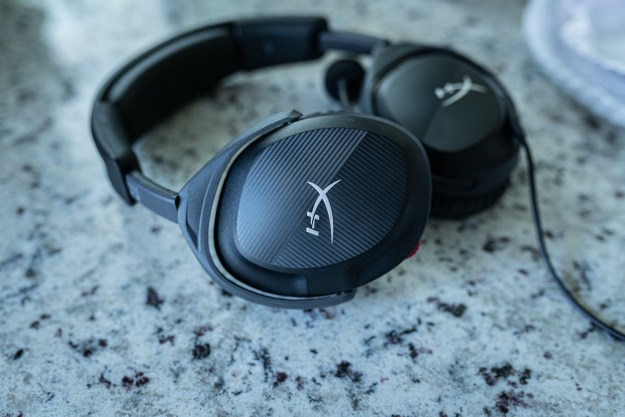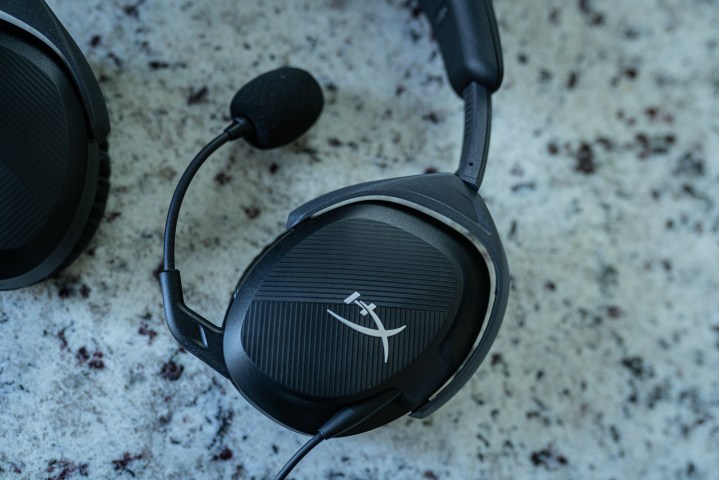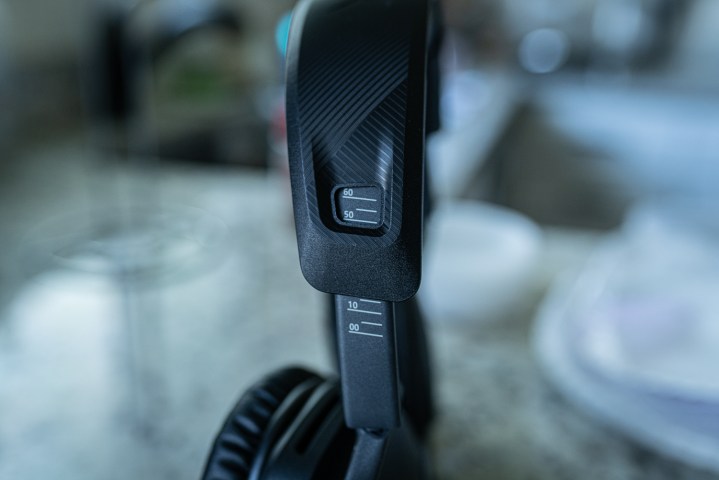
“The HyperX Cloud Stinger 2 is just a great gaming headset. The fact that it's only $50 is the cherry on top.”
- Supremely comfortable
- Solid microphone quality
- Great audio quality and positioning
- Inexpensive
- The wire locks out some devices
All too often in the world of the best gaming headsets, it’s all about features at the cost of price. Sure, headsets like the SteelSeries Arctis Nova Pro provide active noise cancellation (ANC) and a foot rub. But $350? For a headset? You could spend more on them than on a console (or even a graphics card in some cases).
HyperX’s latest Cloud Stinger 2 headset breaks that trend by getting back to basics. It’s only $50, and given the smash success of the original version, I wasn’t surprised to find that it in the areas that truly matter, it competes with even the best (and most expensive) headsets around.
HyperX Cloud Stinger 2 specs
| HyperX Cloud Stinger 2 | |
| Drivers | 50mm neodymium magnet |
| Form factor | Over ear, closed back |
| Frequency response | 10Hz – 28kHz |
| Frame material | Plastic |
| Ear cushion material | Memory foam with leatherette cover |
| Microphone | Bi-directional, noise-cancelling condenser microphone / Flip to mute |
| Weight | 0.6 pounds |
| Wireless | No |
| Connections | 3.5mm (splitter included) |
| Surround sound | Virtual (DTS Headphone:X) |
| Platform support | PC, Nintendo Switch, Xbox Series X/S, PlayStation 5, PlayStation 4, Xbox One |
| Suggested price | $50 |
Not too little, not too much

Let’s take stock of the current market of gaming headsets. If you’re looking for a wired headset below $100, there are a few options you’ll land on: The Astro A10, SteelSeries Arctis 1, Logitech G335, and HyperX’s own CloudX. The Logitech headset is $70, the CloudX and Astro A10 are both $60, and the Arctis 1 is $50.
Normally, there’s quite a divide between a $50 headset and one in the $70 to $80 range. $20 is all that separates the SteelSeries Arctis 1 and Arctis 3, for example, but it’s hard to overstate just much nicer the build quality is on the Arctis 3. An extra $20 or $30 has traditionally made all the difference.
The Cloud Stinger 2 stands out because it brings a host of those higher tier features down to the $50 mark. DTS Headphone:X is what stands out most. This spatial audio software normally runs $20 on its own (you get a code with the Cloud Stinger 2), and you won’t find it on the Arctis 1 or the Astro A10. It’s not true 7.1 surround sound, but DTS Headphone:X helps a lot for spatial audio in competitive games like Call of Duty: Warzone and Rainbow Six Siege.
In fairness to the rest of the market, the Cloud Stinger 2 isn’t the first headset under $50 with DTS Headphone:X. The original Cloud Stinger had it, and the Logitech G432 supports the software, too. Most don’t, however, and the Cloud Stinger 2 has plenty going for it otherwise to make it stand out from the crowd.
True comfort

Even a couple days after launch, one of the key complaints with the HyperX Cloud Stinger 2 is that it feels cheap. It doesn’t. It feels comfortable. It’s true that the Cloud Stinger 2 has an all-plastic construction, but that means it’s extremely light. At only 0.6 pounds, it’s not a stretch to say that the Cloud Stinger 2 makes it feel like you’re barely wearing a headset at all.
This revision is more flexible than the original, as well. It looks more like the HyperX Cloud headset now, with floppy adjustment points that allow you to position the headset perfectly within seconds. The original version has the same points of adjustment, but the thick plastic shell made them a bit more difficult to adjust.
It’s a slight improvement, but the real improvements come when compared to the rest of the market. This became clear when I used the Cloud Stinger 2 next to the Alienware Tri-Mode Wireless Headset. Alienware’s headset is over $200, but the tiny drivers irritate the inside of my ears and the ear cushion is too thin. Similarly, the SteelSeries Arctis 7, also over $200, has too tight of a clamping force and rigid headband adjustments. No matter what headset I used, I defaulted back to the Cloud Stinger 2 for comfort.
On paper, there’s no doubt that the SteelSeries Arctis 7 and Alienware Tri-Mode Wireless beat the Cloud Stinger 2. They both are wireless, for one, and they come with a slew of additional features. But when it comes time to spend a few hours raiding in Destiny 2 or finishing my Ultra Nightmare run in Doom Eternal, comfort is king. The Cloud Stinger 2 beats headsets that cost four or even five times as much in comfort, and the sound can go toe-to-toe.
Premium sound

The Cloud Stinger 2 doesn’t sound as good as a headset that costs $200 or $300, but it’s close. The extra money doesn’t buy you more premium drivers in many cases, instead going toward wireless and features like RGB lighting and ANC. By stripping away those features, the HyperX Cloud Stinger 2 is able to offer highly competitive sound quality at a fraction of the price.
My go-to headset has been the HyperX Cloud Alpha Wireless, which only sounds slightly better than the Cloud Stinger 2 despite costing $200. You’re getting a less sensitive driver overall, not as dynamic, but Cloud Stinger 2 still has the same profile tuned for minute sounds in games that you’re getting with the Cloud Alpha Wireless, as well as similar frequency response due to the size.
In the heat of taking down War Priest in Destiny 2, it’s tough to say that more expensive headphones earn their keep in sound quality. With DTS Headphone:X at the helm, the Cloud Stinger 2 sounds damn close and still provides plenty of clarity across the frequency spectrum. I’ve been using them for just over a week for my day-to-day gaming, and I plan to continue using them.
Should you buy the HyperX Cloud Stinger 2?

If you’re in the market for an inexpensive headset that does basically everything right, the Cloud Stinger 2 is for you. It manages features that are normally reserved for more expensive headsets, comfort that even the top gaming headsets can’t match, and sound quality that goes toe-to-toe with the best headsets around.
Unless you really need wireless, the Cloud Stinger 2 is a testament that you can get a great headset without spending a lot of money. It’s the sweet spot, and proof that $50 is all you need to spend for a top-notch gaming experience.
Editors' Recommendations
- HP launches a new gaming laptop and HyperX accessories
- DirectX 12 vs. DirectX 11: which is best for PC gaming?
- AMD may have just leaked the Ryzen 9 7950X3D release date
- Sony’s new InZone gaming headsets raise the bar for PS5 audio
- The best PC gaming peripherals of CES 2022: Mice, keyboards, headsets, and more







